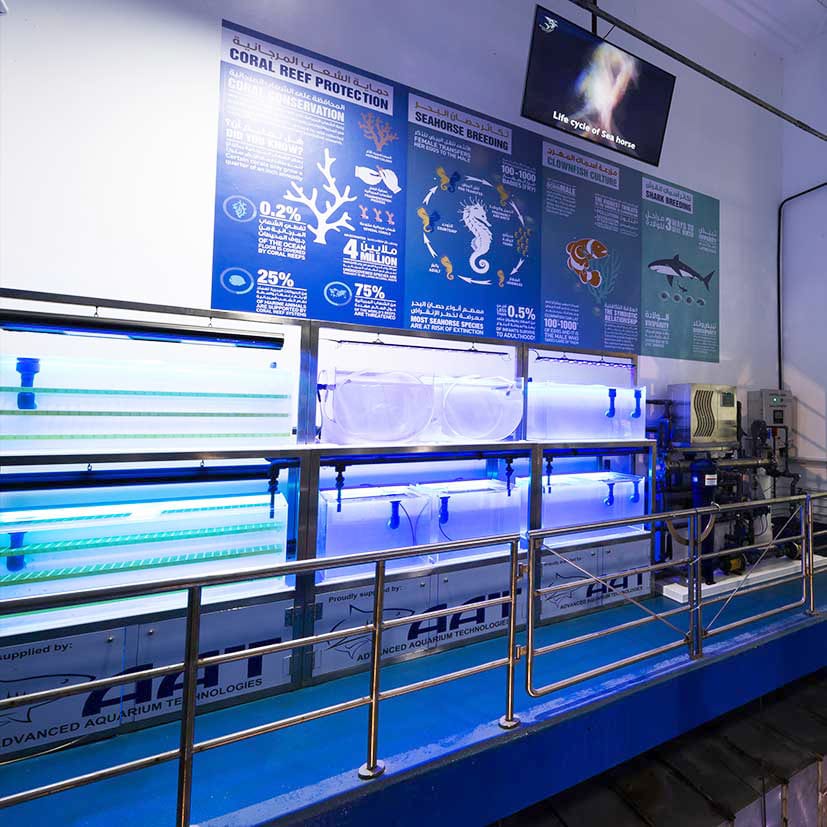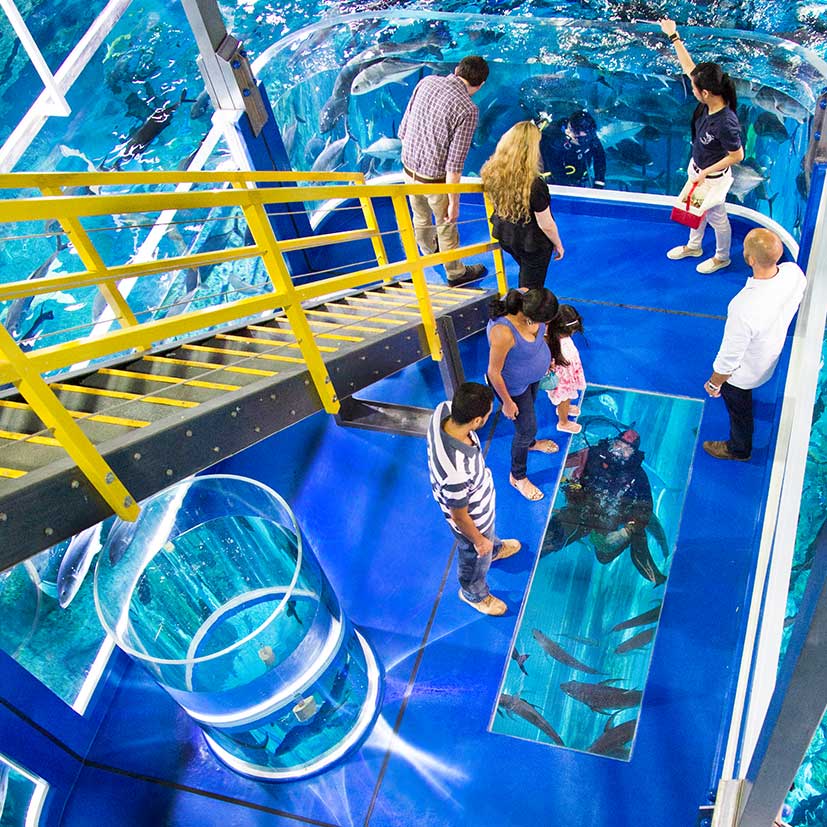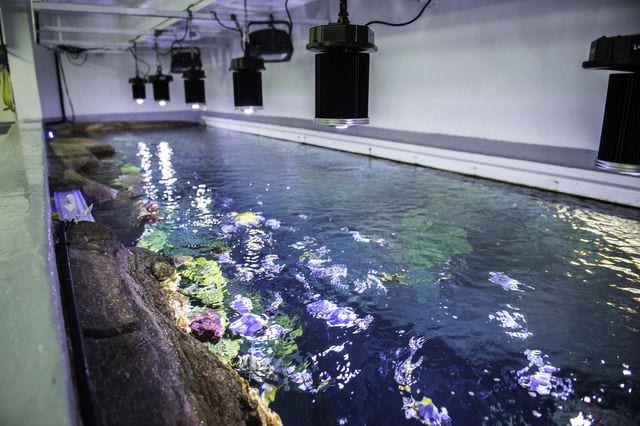Beyond the occasional major refurbishment, aquariums have much to gain from investing in smaller upgrades and enhancements regularly. Ad-hoc renovations help, but best practice is to map out a thoughtful programme of frequent and manageable improvements.
Routinely introducing new species, rejuvenating exhibits and tuning-up visitor-experiences is highly beneficial. Continuous refreshment sustains the public’s interest and enriches the appeal of aquariums to visitors with plenty of alternative leisure-time activities available.
In parallel, a steady drumbeat of less visible behind-the-scenes updates allows aquariums to keep pace with advances in technology and adopt new best practices. Life support system upgrades, for example, help lower operating costs, improve animal care and increase job satisfaction among skilled workers.
Conventional wisdom holds that change is hard, renovations expensive and construction disruptive. Still, with the right partnerships and a spirit of practice-makes-perfect, the benefits outweigh the cost and justify the effort involved.
The simplest and smartest place to begin is with an in-depth and honest look at what modern customers want and value.
MAINTAINING RELEVANCE AND APPEAL
Numerous reports confirm that millennials prefer to spend their money on experiences rather than things. With an average age of 32 in 2020 (+/- 8 years) the post-boomer generation is ever more family-focussed and a prime prospect for aquariums.
Just like previous generations of aquarium visitors, millennials expect to be excited and entertained. What differs is that they want to see appropriate species, appropriately exhibited.
“…the advantage goes to aquariums that refresh the experience regularly and synchronise exhibits with changing customer preferences.“
Consumer sentiment about what appropriate means has some clear trends but remains dynamic. Movies (Finding Nemo, Free Willie), documentaries (Blackfish, March of the Penguins, Blue Planet), the topicality of climate change and concern for natural habitat degradation all increase empathy for animal welfare and impact exhibit preferences.
Traditionally, the arrival of a new animal at an aquarium is an opportunity to refresh the marketing plan. Today, it must be the right species and come with the correct narrative.
For example, a new rescue-resident, such as an injured dolphin or manatee, might immediately tug on the public’s heartstrings and draw foot-traffic. Without the rescue narrative, however, the public’s response may not be as immediate or powerful and could ultimately backfire.
Aquariums will never have the flexibility enjoyed by art galleries and museums when it comes to introducing new exhibits often. Nevertheless, the advantage goes to aquariums that refresh the experience regularly and synchronise exhibits with changing customer preferences.
SHINE A SPOTLIGHT ON RESEARCH AND CONSERVATION
Customer experience improvement initiatives should incorporate ways to introduce and celebrate authentic, scientifically valid conservation and research activity. These efforts validate aquarium mission statements and reward all stakeholders – human and otherwise.
But seeing is believing, so a significant focus for aquariums should be the launch or development of exhibits that showcase research, rescue and animal care initiatives. These activities will most likely double-up as opportunities to deliver educational experiences too.
BRING ON THE FUN
Education, conservation and research are essential, but visitors enjoy some good old-fashioned fun too. Fortunately, zoos and aquariums are perfect venues for next-level immersive experiences.
At Darwin’s Crocosaurus Cove, for example, AAT installed the Cage of Death swim-with-the-crocs experience. Thrill-seekers put on their swimming costumes and climb inside an acrylic cage lowered into a crocodile exhibit. Once submerged, they enjoy a 360 degree underwater view of enormous and menacing predators swimming only inches away.
Another play is to introduce or improve interactive exhibits, such as a swim reef stocked with rays or supervised star-fish tank. These experiences let visitors get up close and personal with animals they might otherwise only see on television.
At the Dubai Mall Aquarium, AAT created a floating viewing platform over the main tank equipped with an acrylic cylinder and five below-surface viewing panels. For visitors, this innovative facility provides an immersive fish feeding experience like no other and breath-taking underwater views (without getting wet).
While routine enhancements keep the public engaged and entertained, when designing an upgrade programme, it pays to look beyond the customer journey and experience.
BACK OF HOUSE MODIFICATIONS
Third-party audits of life support systems, quarantine facilities, lighting systems and operational practices are a great way to spot issues and identify opportunities for improvement behind the scenes.
At one aquarium, for example, by upgrading an old gravity sand filter system, AAT freed up enough floor-space to build a brand new stingray exhibit and its life support system too.
A significant benefit of life support system remodelling is the introduction of more energy-efficient and less wasteful technologies.
When overhauling the life support system at Melbourne’s Sea Life aquarium, for example, AAT introduced new sand filter configurations that improved the flow across the filter media.
The additional of backwash recovery systems can be a quick and efficient upgrade. In addition to reducing water consumption, the system is more energy-efficient. Water recovered from backwashing is already close to tank-temperature. So, unlike cold town water, water recovered from backwashing needs little-to-no heating.
Behind-the-scenes make-overs can also be useful for the staff and animals.
Modernisation programmes create quieter plant rooms, introduce greater use of sensor-enabled automated technologies and create life support systems that are easy to operate. Collectively these improvements create altogether more enjoyable working environments that help aquariums retain and attract the best talent.
Water treatment upgrades deliver animal-care outcomes too. For example, by switching to dual foam-fractionator/UV-systems, aquariums can end the out-of-date practice of sanitising the water in penguin exhibits using chlorine.
MINIMISING DISRUPTION
Naturally, when selecting vendors for renovation and upgrade work, aquariums want to know that they are paying a reasonable and appropriate price. Vendor-selection processes can be problematic if they lead to a revolving door of suppliers. It is in the aquarium’s interest to create strategic relationships with suppliers and to help them build-up an intimate knowledge of its equipment, systems, animals, operational history, nuances and vision.
By helping suppliers become intimately familiar with the aquarium, build trusted relationships with the staff and share upgrade-work experiences, ongoing aquarium enhancement programmes become far smoother and less disruptive to execute. Everyone wins.
CREATING YOUR AQUARIUM-ENHANCEMENTS MASTER-PLAN
Once or twice in a lifetime major refurbishment/expansion programmes will always have their place (and are badly needed in some older facilities). However, in our experience, maintaining an ongoing programme of regular upgrades to customer experiences, exhibits and back-of-house operations is crucial and yields many benefits:
- Stay relevant and appealing to customers with evolving tastes and preferences
- Replace tired and aging infrastructure with fresh, modern facilities
- Gain greater visibility on and recognition for research, rescue and conservation work
- Enhance the delivery of educational experiences
- Lower waste and costs
- Increase job satisfaction for employees
- Improve animal care
While tactical needs and opportunities arise, the development of a carefully considered medium-long term Aquarium-Development Master-Plan helps clarify the vision, set priorities and create a roadmap for the delivery of critical projects. Whether your aquarium creates a development master-plan from scratch or by revisiting and rebooting an old one, AAT would be delighted to help. We have no shortage of ideas and experiences to share.
DISCLAIMER
The information in this article is general in nature and does not constitute professional advice and is not intended to be a substitute for such advice and should not be relied upon as such. You should consider whether the information is appropriate for your needs. The article and any associated content published are bound by the terms and conditions of use. The terms and conditions of use of AAT’s website can be found here.


